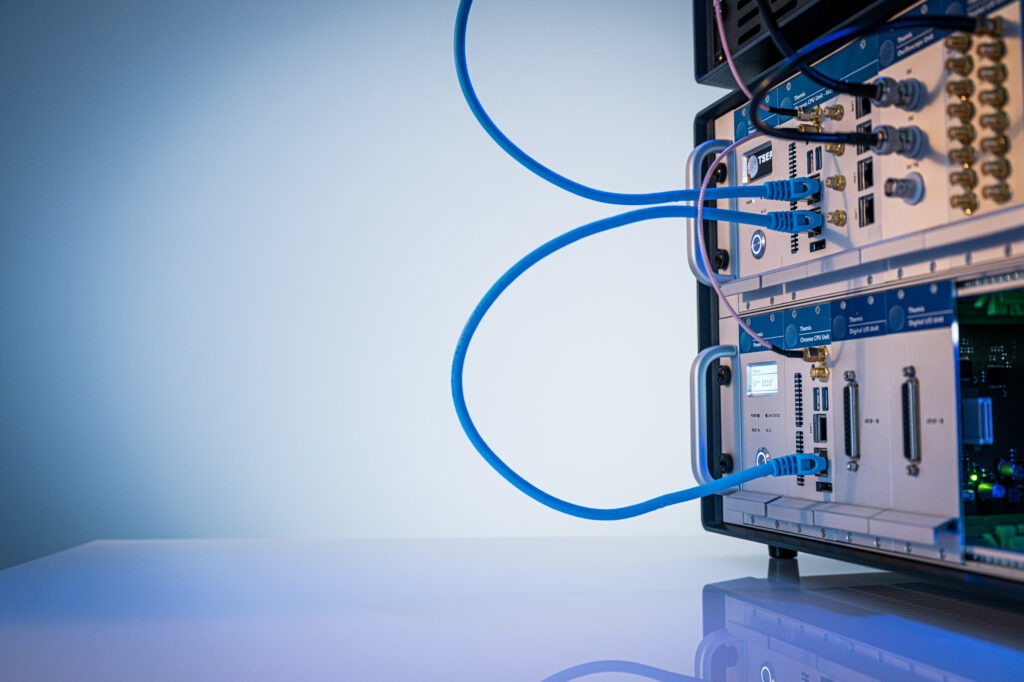Measurement technology poses numerous challenges today: Distributed measurement systems and complex synchronization processes make precise measurements difficult and limit the informative value in the overall context. Without a uniform, synchronized time base, measurement data cannot be used reliably for analyses and simulations.
TSEP THEMIS CHRONOS offers innovative solutions that are based on established global standards and enable precise time synchronization:
Digital time synchronization
With the IEEE 1588 Precision Time Protocol (PTP) standard, TSEP THEMIS makes it possible to assign a precise time stamp of +/-40 ns to measured values from the Themis cards – across all THEMIS devices used in the measurement system. This creates a uniform time base, which is essential for correlatable measured values.
Time-controlled triggers
Using the optional CHRONOS component and the IEEE 1588 PTP standard, TSEP THEMIS offers the option of performing time-controlled measurements in the THEMIS cards. Measuring components that do not offer this functionality using the IEEE 1588 standard can be retrofitted with this functionality using the THEMIS 1588 multiplexer. The accuracy achieved here is in the +/- 40 ns range.
Standardized control
The extended measurement capabilities of TSEP THEMIS are based on established standards such as IEEE 1588 and White Rabbit. The “Trigger and Sync API” standard developed by the IVI consortium is used for the configuration and management of time-synchronous triggers and timestamps. This means that devices from other manufacturers that support these standards can also be seamlessly integrated into THEMIS measurement systems.
Highly accurate time synchronization
For applications that require even higher precision, TSEP THEMIS offers the optional ATHENA component. This allows various TSEP THEMIS devices to be synchronized in the picosecond range. With the THEMIS ATHENA reference signal extender, devices from other manufacturers can also be integrated into the time-synchronized measuring system.
This option is expected to be available at the end of 2025 and will open up new possibilities for the most demanding measurement technology applications.
